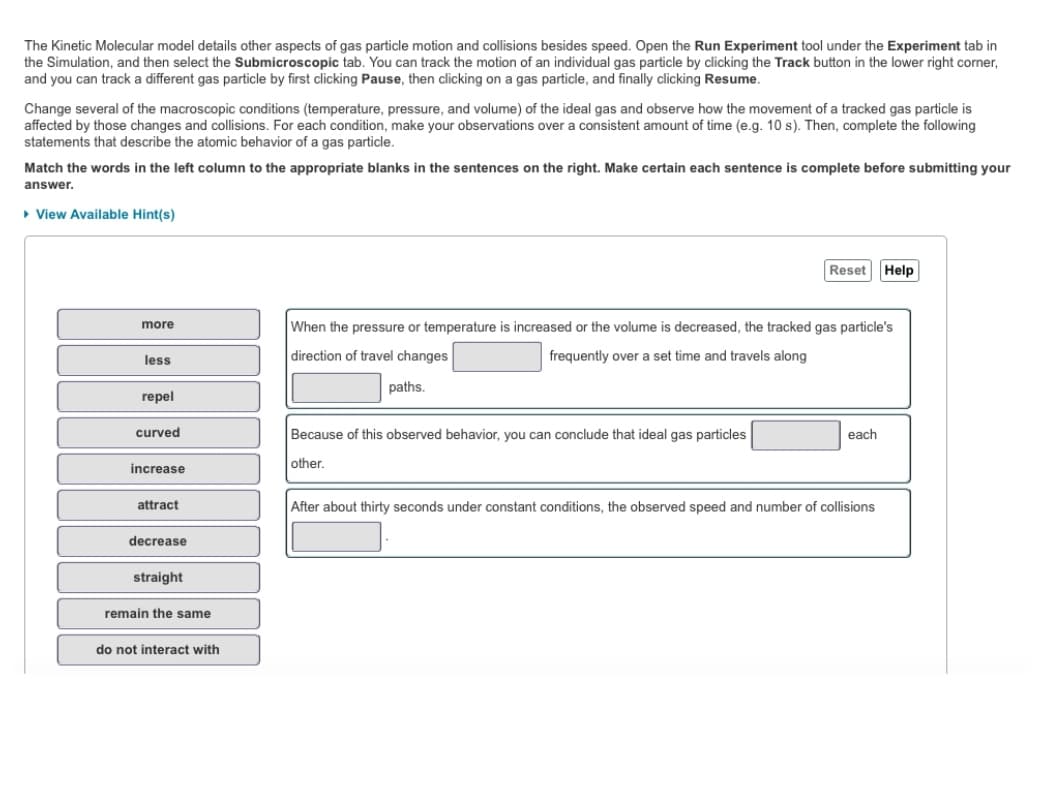The Kinetic Molecular model details other aspects of gas particle motion and collisions besides speed. Open the Run Experiment tool under the Experiment tab in the Simulation, and then select the Submicroscopic tab. You can track the motion of an individual gas particle by clicking the Track button in the lower right corner, and you can track a different gas particle by first clicking Pause, then clicking on a gas particle, and finally clicking Resume. Change several of the macroscopic conditions (temperature, pressure, and volume) of the ideal gas and observe how the movement of a tracked gas particle is affected by those changes and collisions. For each condition, make your observations over a consistent amount of time (e.g. 10 s). Then, complete the following statements that describe the atomic behavior of a gas particle. Match the words in the left column to the appropriate blanks in the sentences on the right. Make certain each sentence is complete before submitting your answer. ▸ View Available Hint(s) more less repel curved increase attract decrease straight remain the same do not interact with Reset Help When the pressure or temperature is increased or the volume is decreased, the tracked gas particle's direction of travel changes frequently over a set time and travels along paths. Because of this observed behavior, you can conclude that ideal gas particles other. each After about thirty seconds under constant conditions, the observed speed and number of collisions
Ideal and Real Gases
Ideal gases obey conditions of the general gas laws under all states of pressure and temperature. Ideal gases are also named perfect gases. The attributes of ideal gases are as follows,
Gas Laws
Gas laws describe the ways in which volume, temperature, pressure, and other conditions correlate when matter is in a gaseous state. The very first observations about the physical properties of gases was made by Robert Boyle in 1662. Later discoveries were made by Charles, Gay-Lussac, Avogadro, and others. Eventually, these observations were combined to produce the ideal gas law.
Gaseous State
It is well known that matter exists in different forms in our surroundings. There are five known states of matter, such as solids, gases, liquids, plasma and Bose-Einstein condensate. The last two are known newly in the recent days. Thus, the detailed forms of matter studied are solids, gases and liquids. The best example of a substance that is present in different states is water. It is solid ice, gaseous vapor or steam and liquid water depending on the temperature and pressure conditions. This is due to the difference in the intermolecular forces and distances. The occurrence of three different phases is due to the difference in the two major forces, the force which tends to tightly hold molecules i.e., forces of attraction and the disruptive forces obtained from the thermal energy of molecules.

Trending now
This is a popular solution!
Step by step
Solved in 2 steps









